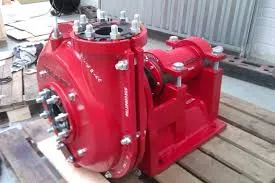English
- Afrikaans
- Albanian
- Amharic
- Arabic
- Armenian
- Azerbaijani
- Basque
- Belarusian
- Bengali
- Bosnian
- Bulgarian
- Catalan
- Cebuano
- Corsican
- Croatian
- Czech
- Danish
- Dutch
- English
- Esperanto
- Estonian
- Finnish
- French
- Frisian
- Galician
- Georgian
- German
- Greek
- Gujarati
- Haitian Creole
- hausa
- hawaiian
- Hebrew
- Hindi
- Miao
- Hungarian
- Icelandic
- igbo
- Indonesian
- irish
- Italian
- Japanese
- Javanese
- Kannada
- kazakh
- Khmer
- Rwandese
- Korean
- Kurdish
- Kyrgyz
- Lao
- Latin
- Latvian
- Lithuanian
- Luxembourgish
- Macedonian
- Malgashi
- Malay
- Malayalam
- Maltese
- Maori
- Marathi
- Mongolian
- Myanmar
- Nepali
- Norwegian
- Norwegian
- Occitan
- Pashto
- Persian
- Polish
- Portuguese
- Punjabi
- Romanian
- Russian
- Samoan
- Scottish Gaelic
- Serbian
- Sesotho
- Shona
- Sindhi
- Sinhala
- Slovak
- Slovenian
- Somali
- Spanish
- Sundanese
- Swahili
- Swedish
- Tagalog
- Tajik
- Tamil
- Tatar
- Telugu
- Thai
- Turkish
- Turkmen
- Ukrainian
- Urdu
- Uighur
- Uzbek
- Vietnamese
- Welsh
- Bantu
- Yiddish
- Yoruba
- Zulu
Telephone: +86 13120555503
Email: frank@cypump.com
Nov . 21, 2024 14:34 Back to list
slurry pump rubber parts
Understanding Slurry Pump Rubber Parts Importance and Benefits
Slurry pumps are critical components in various industries, including mining, construction, and wastewater management. These pumps are designed to handle a mixture of solids and liquids, known as slurry. One of the key elements that contribute to the efficiency and longevity of slurry pumps is their rubber parts. This article delves into the significance of rubber components in slurry pumps, highlighting their benefits and maintenance.
The Role of Rubber Parts in Slurry Pumps
Rubber parts in slurry pumps, such as impellers, liners, and seals, play a pivotal role in ensuring the pump's effectiveness. The primary function of these rubber components is to provide a durable barrier between the pump housing and the abrasive slurry. This not only protects the internal components of the pump but also minimizes wear and tear, extending the pump’s operational life.
Rubber is favored for these applications due to its excellent elasticity, resilience, and wear resistance. These characteristics allow rubber parts to absorb shocks and vibrations, which is crucial when dealing with the high-pressure and high-impact nature of slurry transport. Moreover, rubber can accommodate varying slurry densities and temperatures, maintaining pump performance across different working conditions.
Benefits of Using Rubber Parts in Slurry Pumps
1. Wear Resistance One of the most significant benefits of rubber components is their resistance to abrasion. When transporting abrasive materials, such as sand, gravel, or various sludges, the rubber parts endure less damage compared to metal counterparts, resulting in lower replacement costs over time.
slurry pump rubber parts

2. Flexibility and Adaptability Rubber parts can be engineered to specific tolerances and can be molded into complex shapes, providing manufacturers with the flexibility to customize parts for different slurry compositions and pump designs. This adaptability helps improve the pump's overall efficiency.
3. Reduced Noise and Vibration The elasticity of rubber reduces noise and vibration levels in slurry pumps, which is beneficial in industrial settings where operator comfort and noise regulations are a priority. This feature also contributes to less stress on the pump structure, ultimately enhancing the reliability of the equipment.
4. Cost-Effectiveness While rubber components may have a higher initial cost than some alternatives, their longevity and reduced maintenance needs make them more cost-effective in the long run. This is particularly important in industries where downtime can lead to significant financial losses.
5. Corrosion Resistance Many rubber compounds are resistant to various chemicals, providing additional protection against corrosive materials that may be present in the slurry. This characteristic further extends the lifespan of the rubber components.
Maintenance of Rubber Parts
To maximize the lifespan and efficiency of rubber parts in slurry pumps, regular maintenance is crucial. This includes routine inspections for signs of wear, proper lubrication, and timely replacement of damaged components. Furthermore, operators should ensure that the slurry's pH level and temperature are within acceptable limits to prevent rubber degradation.
In conclusion, the rubber parts of slurry pumps are vital for their efficiency and longevity. Their unique properties make them an ideal choice for managing challenging pumping tasks associated with abrasive slurries. By understanding the importance of these components and committing to regular maintenance, industries can ensure optimal performance and reliability from their slurry pumps.
-
ISG Series Vertical Pipeline Pump - Chi Yuan Pumps Co., LTD.|High Efficiency, Energy Saving, Low Noise
NewsJul.30,2025
-
ISG Series Vertical Pipeline Pump- Chi Yuan Pumps|High Efficiency&Low Noise
NewsJul.30,2025
-
ISG Series Vertical Pipeline Pump-Chi Yuan Pumps Co., LTD.|High Efficiency&Energy Conservation
NewsJul.30,2025
-
ISG Series Vertical Pipeline Pump - Chi Yuan Pumps Co., LTD.|Advanced Hydraulic Design&Energy-Efficient Solutions
NewsJul.30,2025
-
ISG Series Vertical Pipeline Pump - Chi Yuan Pumps Co., LTD.
NewsJul.30,2025
-
ISG Series Vertical Pipeline Pump - Chi Yuan Pumps Co., LTD.|energy-efficient fluid handling&industrial durability
NewsJul.30,2025










